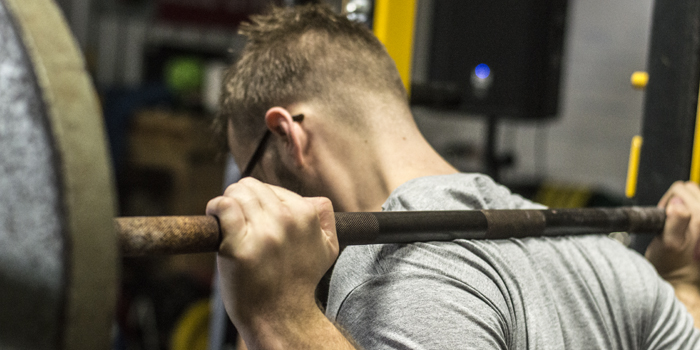
Overtraining has been a topic of much debate. This debate has not been so much of the mechanistic description of what is taking place within the body, but more-so as to whether it is an actual training-induced syndrome. This article is not geared toward persuading you as to whether it is or is not a thing. That’s because the overtraining syndrome is a thing and, because of that, I will be taking an in-depth, mechanistic approach at delineating some of the key players in relation to this phenomenon. It is well recognized that overtraining can be due to both hormonal fluctuation leading to less than desirable effects, along with dysfunctional mechano-transducing properties at the cellular level. These will be the two areas focused upon in this article.
The human organism is an ever-evolving, homeostasis-seeking, adaptation-inducing, survival-focused being, made up of immense complexity that we are still only scratching the surface of. Training effects all aspects of this complex system. The way in which the overall signal causes these changes can be looked at on both the macroscale and the microscale. This article will be looking directly at the microscale and the effect overtraining may have on the cellular and molecular functionality. Specific emphasis will be placed on the way both signal-transducing effects (growth factor induced) and mechano-transducing effects (mechanical stress leading to a biochemical response) play a large role in the overtraining phenomenon. The first area to be looked at is the effect of overtraining on the endocrine system.
RELATED: You're Probably Not Overtraining
The hormonal environmental is a dynamic system within the body which continuously changes dependent upon the external and internal environment. Concerning exercise, the predominant hormonal responders to be looked at, at least within this article, is the Insulin-like Growth Factor (IGF-1)/Growth Hormone (GH) axis, and the Luteinizing Hormone Releasing Hormone (LHRH)/Luteinizing Hormone (LH)/Testosterone pathway and their molecular effects.
The primary focus of these hormones in relation to overtraining can be looked at in regards to the total production and secretion into the bloodstream along with, in my opinion, more importantly, the density and affinity of the target tissue of which these hormones are designed to interact with. The hormones IGF-1 and GH are not fat-soluble, thus they must bind to a receptor on the exterior of the cell which then cause a secondary-messenger system, leading to increased protein synthesis. Testosterone, on the other hand, is fat soluble and can permeate through the cell membrane allowing for direct interaction with protein signaling molecules within the cell interior. A more in-depth look of each of these hormones and the effect overtraining has on them follows.
Growth Hormone/IGF-1
Growth Hormone (GH) is an incredibly interesting steroid with many different isoforms playing varying degrees of importance in relation to training. The predominant isoform that is studied and that plays an integral role following the stress response, as we are currently aware, is the GH 22kd isoform. Knowing the specific isoform is not important for this article, so I will from here on simply call it GH. GH is well known to increase rather rapidly following an external stressor, both physically and psychologically. One of the primary effects of GH is its role as a somatomedin stimulator. Somatomedin is a hormone that stimulates tissue growth, and upregulation of this hormone leads to bone growth and cell division — a clearly important role concerning the improvement of one’s state of physical preparedness.
Following repetitive bouts of training without adequate rest, GH’s ability to stimulate somatomedin secretion is reduced along with the body’s ability to utilize the somatomedin that has made its way into the circulation. Taking a real-world, athletic perspective, this reduction in somatomedin secretion due to dysfunctional GH control leads to weaker bones along with decreased cell proliferation. How often do we see stress fractures in high-level sport? These are injuries that, with proper program management, should be practically non-existent. Somatomedin dysfunctionality may be a key contributor.
Taking a quick step back, it is important to look at the hormone that allows for the production and secretion of GH: Growth Hormone Releasing Hormone (GHRH). The amount of GHRH released determines the GH amplitude. Through ever-increasing bouts of training with minimal rest, high levels of corticoids send a negative feed-back loop, which leads to a decreased GHRH and a subsequent suppression of circulating GH. This effect is two-fold when we take into consideration the GH-IGF-1 axis. GH has shown to be a key stimulator of IGF-1 upon their arrival to their target tissues. This reduction in GH and IGF-1, both anabolic hormones, leads to an increase in proteolysis, along with a decrease in protein synthesis. Thus, regardless of how hard you may be training, the results may be negligible due to the negative effect it has on both GH and IGF-1.
Testosterone
Testosterone, like growth hormone and insulin-like growth factor, is reduced in relation to continuous external stress. Again, like GH, testosterone is activated by precursor hormones — Luteinizing hormone releasing hormone (from the hypothalamus) and Luteinizing Hormone (from the anterior pituitary), which then stimulates the release of testosterone from the testes. Following a continuous stressor, the entirety of this system is inhibited. LHRH declines lead to a decrease in LH which inevitably reduces testosterone levels.
It gets worse. With this increased stressor, production and secretion of prolactin (another hormone) increases, which decreases the responsiveness of the pituitary gland to LHRH, causing a reduction in LH. However, the remaining LH that was able to be secreted regardless of the decreased pituitary gland responsiveness will still be able to stimulate testosterone secretion from the testes, right? Wrong. The enhanced glucocorticoid levels due to this stress inhibits this stimulating pathway, leading to a further reduction of testosterone circulation via a further inhibition of the testes responsiveness to LH. So, as can be seen, there are various avenues within the testosterone secreting pathway to be negatively affected by overtraining and, when done, will impede athletic performance.
Receptor Affinity, Density, and Second-Messenger System
Now, let’s say that there is ample testosterone, growth hormone, and insulin-like growth factor hormone present throughout the body. Far too often this is the case with still minimal anabolic effects taking place within the cell. Oftentimes the issue, which is rarely discussed, is the affinity of the target tissue receptors for the specific growth factor (GH/IGF-1/Test.). This brings rise to further speculation to the usefulness of the testosterone: cortisol ratio, but that’s an entire different article.
As previously mentioned, when these hormones are released, they circulate throughout the body and bind to specific receptors on target tissues. These growth factors bind to the receptors on the cells exterior (unless it is testosterone, which binds within the cell) and initiate a secondary-messenger cascade of events in hopes to cause gene transcription and protein synthesis. If the affinity of these target tissues has become down-regulated, it does not matter how much circulating hormones are present. Their anabolic effect cannot take place. This then reduces the necessary protein signaling pathways within the cell. Taking IGF-1 and GH as an example, the down-regulated interaction between it and its receptor leads to a reduction in PI3k – Akt – mTOR – p70s6k and the following mRNA translation initiation and protein synthesis which follows. This is bad news if an anabolic effect is sought. Again, this is regardless of the current level of the circulating hormones.
Reviewing this section, it can be seen the rather complex nature of the hormonal system and the many different interactions within it. However, it is clear that chronic stress with inadequate recovery negatively effects these hormones, which leads to a reduction in protein synthesis along with an increase in proteolysis. Proper program management and implementation of various recovery modalities is necessary to combat these issues.
The Mechanical-Transducing Connection — From ECM to the Nucleus
Stepping aside from the hormonal interactions throughout the body, there is a different way in which the body can communicate, which, in my opinion, plays greater importance in relation to an individual’s physiological state of readiness/preparedness. I say this because the speed at which this system responds is far faster than the endocrine (hormonal) system. This system is the mechano-transducing system.
Our body is an incredibly efficient and effective organism which, through many years of evolution, has constructed predominant pathways that allow communication to be transmitted at an incredible rate of speed. This pathway transduces mechanical signals into biochemical responses either in the cytoskletelon/cytoplasm and/or further transduces that mechanical signal directly to the nucleus, leading to change in genetic expression. Why is this mechanical transducing channel of communication so important? It is approximately forty times faster than that of the traditional growth factor binding, secondary-messenger signaling, gene transcription processing, system. This section will look at how overtraining negatively effects this system and what effects may come about.
MORE: What Type of Deload Will Help You Recover Best?
For cellular mechanics to function appropriately, an extracellular matrix (ECM) is required. Donald Ingber demonstrated this brilliantly when he placed mammary epithelial cells on a laboratory dish lacking an ECM surface. These cells lost their ability to produce milk proteins. When the cells were placed on an extracellular rich surface, the cellular function changed to that of a typical mammary epithelial cell and regained their ability to produce milk proteins. Similarly, Dr. Ingber showed that, when placing a cell on a cloth-like fabric, there were tiny ripples on the cloth due to the contractile properties of the cell, showing the stress transduced both to the ECM along with to the cell. Along with this, within Ingber’s Lab, micropipettes were bound to cellular receptors and were pulled outward. This caused the cytoskeletal filaments and structures in the nucleus to realign within milliseconds along the line of pull. This demonstrates the continuity within the system.
So why is proper mechanotransduction so important and what role does overtraining play in it? It is first important to delineate the various aspects of this system. Let’s start with the extracellular matrix. The ECM is comprised of collagen, elastin, fibronectin, laminin, proteoglycan, microfibrillar proteins, and hyaluronan. These all play key roles in the functionality of the ECM and will either be more or less organized, greater in quantity or differentiate in isoform make-up, all dependent on the area which it is located (bone, tendon, skin, etc). The primary substances within the ECM that will be focused upon in this article are the collagen, laminin, and hyaluronan molecules.
Collagen
Collagen is the most abundant protein in the human body and is secreted by various cells such as the fibroblast. These fibroblasts, when an external stimulus is initiated, will secrete collagen in a tension-dependent manner. This is a functional and necessary response. However, in the presence of overuse, collagen secretion can be secreted in quantities too great, which cause an increased tension-state of the ECM. Being that the ECM is linked to the cell via spanning protein filaments (as will be discussed in an upcoming section), this then leads to the cellular stress-state to change and inevitably a change in intracellular biochemical communication and the alteration of genetic expression.
Furthermore, collagen is formulated from a crystalline lattice structure. This structure consists of piezoelectric effects, meaning the ability to transmit electric charge by means of mechanically induced stress. Collagen fibers, when mechanically stressed, release a negative charge, allowing for an increase in negative charge within the soft tissue. With repeated mechanical load with insufficient time for recuperation, an issue arises consisting of a change to the electric polarization, which then negatively impacts the surrounding cellular and molecular physiology. An in-depth review of this area of collagen communication is inappropriate for this article. For further information, please read, “Piezoelectric Templates — New Views on Biomineralization and Biomimetics.”
Laminin
Laminins comprise the structural scaffolding of the basement membranes and facilitate binding from cellular membrane spanning integrins to collagen dependent upon the specific integrin (there are 18 alpha integrin subunits and eight beta integrin subunits) and the specific collagen type (there are 24 types of collagen). These laminin are required for cell differentiation, cell movement, cell shape, and the promotion of cell survival. In human muscles, resistance training induces upregulation of mRNA and protein expression levels of various laminin phenotypes. Along with this, laminin plays a crucial role in the acetylcholine receptor affinity in relation to their connection and responsiveness to the transmembrane linkers (integrins), thus allowing for adequate neural control of cellular function. This demonstrates that inadequate or too much external stress to the laminin will lead to dysfunctional congruency between the cells integrin and subsequent neurological control.
Hylauranon
Hyaluronan or hyaluronic acid is a member of the glycosaminoglycan (GAG) family within the ECM. GAGs are incredibly important concerning the ECM because they consist of a high density of NA+ which, due to their activity state of osmotically, allow for large amounts of water to be taken up into the matrix. This increased hydration level of the ECM leads to pressure levels that allow for the ability to withstand compressive forces. It is accurate to consider hyaluronic acid as a lubricant that plays a major role in tissue repair. Having said this, chronic repetitive movements with minimal variety and minimal rest, as is typical in states of overtraining, lead to decreased hydration qualities of the ECM, primarily due to the decreased activity of hyaluronic acid. This is a key component in the "exercise variety" subcategory of overtraining factors.
This concludes some of the key factors within the extracellular matrix. This demonstrates how repetitive external stressors without sufficient rest and sufficient movement variety can lead to poor ECM quality and, as will be discussed in the following section, insufficient transmembrane mechanical-transducing properties.
Integrins
The ECM, as was mentioned, is everything outside of the cell. Now the question is, how can force be transmitted from outside of the cell (the ECM) to inside of the cell? This is allowed via the integrin, which physically connects a cell to its anchoring substrate. Integrins are a dynamic, ever-changing, renewing entity, all dependent on the degree of load, time-scale of stimulus (or lack-there-of: microgravity) which will influence the functionality of the integrins and their subsequent mechano-transducing properties, inevitably impacting the biochemical milieu of the intracellular environment.
Within skeletal muscle, the predominant integrin is the alpha7 beta1 integrin. Alpha7 beta1 integrin is a laminin receptor which maintains muscle integrity, increases regenerative capacity, promotes hypertrophy, determines cell shape, and allows for adequate cell motility. This, however, is all susceptible to change dependent upon the spanning molecules states of tension via either the intracellular and/or extracellular stress-state. This stress-state, which dictates the ability to respond to the mechanical stimuli, is negatively affected by periods of overtraining.
In relation to its role with hypertrophy and CSA, alpha7 beta1, as demonstrated by Burkin and colleagues, has been shown to, “promote the organization of laminin in the extracellular matrix, and the laminin has been shown to maintain the proliferation of myogenic precursor cells. Therefore, increased transgenic alpha7 beta1 integrin in myofibers may enhance laminin organization in the matrix surrounding myofibers and stimulate satellite cell proliferation.” This is a truly incredible finding.
Furthermore, the alpha7 beta1 integrin has been shown to change its total quantity within cells due to intensive training bouts. Again, with an inappropriate training load, while overtraining may not reduce their overall quantity (this area has not been studied so it may very well reduce its overall quantity), it may decrease their ability to properly organize the laminin (a protein in the ECM), subsequently causing poor muscle fiber integrity and inefficient transducing properties. Similarly, this decreased laminin organization may cause a decreased functionality of the dystrophin-glycoprotein complex (another mechano-transducing complex spanning the cellular membrane). These specific (dystrophin-glycoprotein complex) proteins allow proper force transmission between the ECM and the cytoskeleton. Reduced functionality of these proteins, as can be seen with an individual who has muscular dystrophy, causes poor mechano-transducing properties throughout the cellular network. The overtraining effect may negatively impact this communicating pathway, as can be seen with individuals who have muscular dystrophy, albeit to a much lesser degree.
It appears that the most important aspect of this integrin is its preferential location at the myotendinous junction (MTJ). This is important because these integrins provide the necessary stabilization to prevent muscle fiber injury at sites of high-force transmission, such as the MTJ. Overexertion and a too great external stressor may cause issue with the bundling of these integrins at the MTJ. This then leads to a heightened susceptibility for soft tissue injury. Might a dysfunctional alpha7 beta1 integrin quality/quantity at the MTJ sites be a key issue with the ever-increasing prevalence of injury in elite sport, specifically non-contact soft tissue injuries? It’s certainly possible.
Lastly, it is important to look at the intracellular component in relation to force transmitting properties, specifically the cytoskeleton, LINC proteins, and the nuclear matrix.
The cytoskeleton is made of three predominant components forming its structure: microfilaments, microtubules, and intermediate filaments. These structures produce either tension or compression, causing a pre-stressed model ready to transduce force upon any perturbation. Being that the cytoskeleton is connected to both the nucleus and the extracellular matrix, the stress-state of the cytoskeleton is crucial for adequate communication. It has been demonstrated that too great of an external stress results in increased cytoskeletal tension leading to undesirable biochemical responses.
This cytoskeletal structure is linked directly to the nucleus via two predominant nuclear membrane spanning proteins called laminins. The two primary laminins that provide structural support to the nucleus, along with being a communication pathway, is Laminin A and B. This connection, continuing with other LINC (linker of nucleo-skeleton and cytoskeleton) proteins, connects directly to the chromatin within the nucleus. This now gives light to the ability of the nucleus to act as a cellular mechanosensor, which can change gene function. It was recently reported that, “Fluid shear stress and compressive stress application increase intranuclear movement of fluorescent fusion proteins binding to ribosomal DNA and RNA in several cell lines, indicating externally applied forces can indeed alter chromatin organization and accessibility.” Thus, this pathway is incredibly important for switching cells between different genetic programs. This pathway, like the others mentioned, is disrupted following a reduction or increase in the physiologically normal stress-state, leading to improper force transmission and, in our case, either an increase in catabolic processes and/or a decrease in anabolic processes.
Putting it all together, a chain of specific molecules form the mechanically interactive communication system (which play off each other), along with the change in the hormonal environment, can change the end product (protein synthesis) if any of these specific areas are not working properly. Overtraining is a multi-faceted phenomenon and we only looked at two of the many different causes. This article was not meant to tell you what to do to combat overtraining; this article was meant to inform you how overtraining effects the body. Knowledge is power and regardless of how dull this topic may be to you, discussing overtraining without understanding what the various physiological aspects are may cause poor decision-making and negatively affect you and/or your athletes.
References
- Boppart M. D., Burkin D. J. & Kaufman S. J. Alpha7beta1-integrin regulates mechanotransduction and prevents skeletal muscle injury. Am J Physiol Cell Physiol 290, C1660–1665 (2006)
- Boppart M. D., Burkin D. J. & Kaufman S. J. Activation of AKT signaling promotes cell growth and survival in α7β1 integrin-mediated alleviation of muscular dystrophy. Biochem Biophys Acta1812, 439–446 (2011)
- Burkin D. J. & Kaufman S. J. The alpha7beta1 integrin in muscle development and disease. Cell Tissue Res 296, 183–190 (1999)
- Hornberger T. A., Esser K. A. (2004). Mechanotransduction and the regulation of protein synthesis in skeletal muscle. Proc. Nutr. Soc.63, 331–335. 10.1079/PNS2004357
- Ingber, D.E., and Folkman, J. (1989b). Mechanochemical switching between growth and differentiation during fibroblast growth factor stimulated angiogenesis in vitro: role of extracellular matrix. J. Cell Biol. 109, 317-330.
- Ingber, D.E. (1993). The riddle of morphogenesis: a question of solution chemistry or molecular cell engineering? Cell 75, 1249- 1252
- Kreider, Richard B, Andrew C. Fry, and Mary L. O'Toole. Overtraining in Sport. Champaign, IL: Human Kinetics, 1998. Print.
- Myers, T. W. (2001). Anatomy trains: myofascial meridians for manual and movement therapists. Edinburgh, Churchill Livingstone.
- Sapolsky, Robert M. Why Zebras Don't Get Ulcers. New York :Owl Book/Henry Holt and Co., 2004. Print.
- Wang, N., Butler, J.P., and Ingber, D.E. (1993). Mechanotransduction across the cell surface and through the cytoskeleton. Science 260, 1124-1127.
Luke Olsen is a current graduate student within the Exercise Physiology department at the University of Kansas with research interests related to exercise’s role in cellular and molecular physiology.









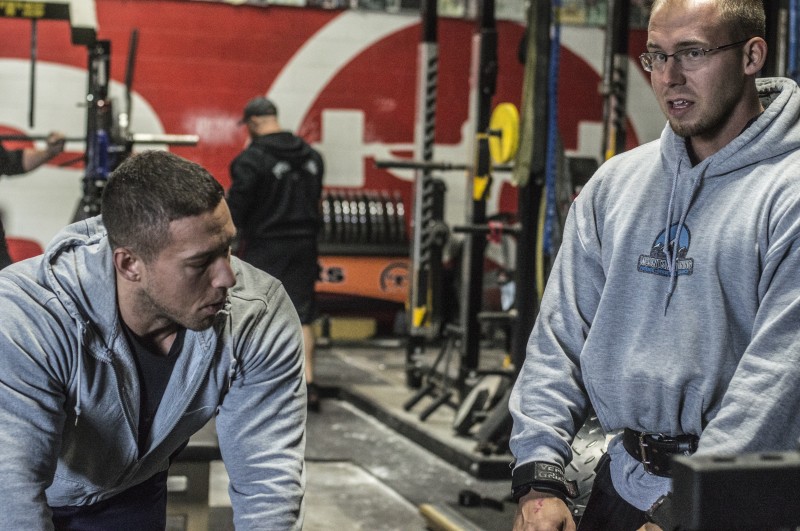
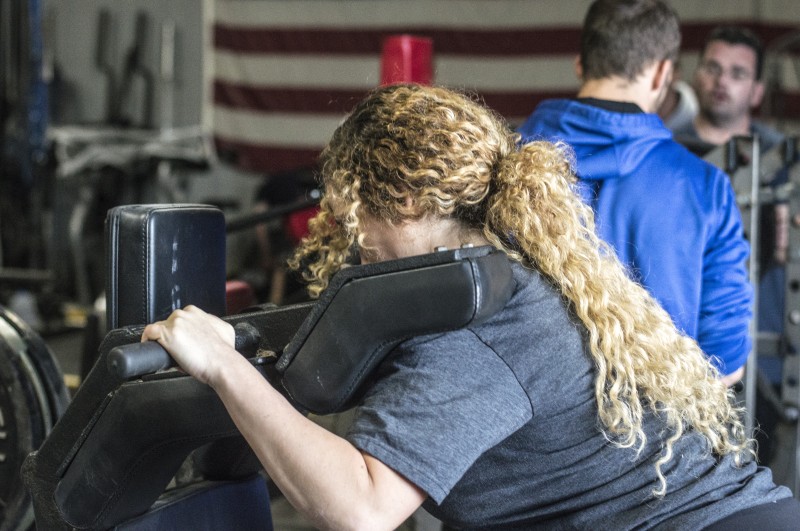
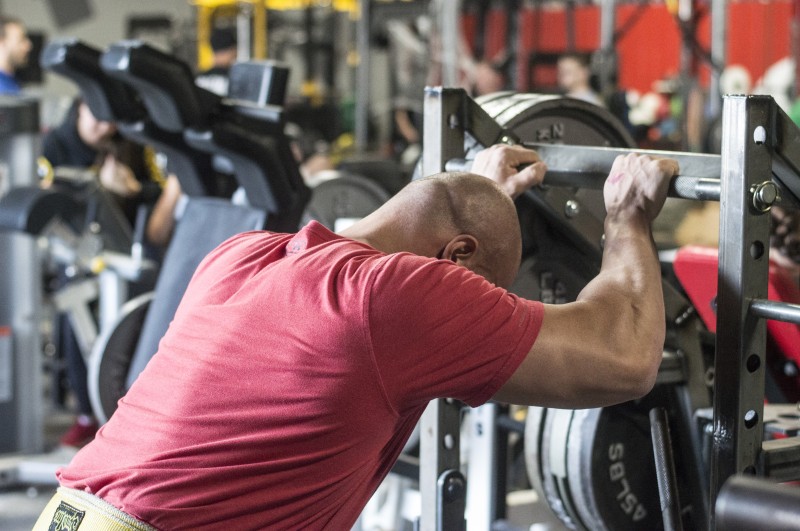
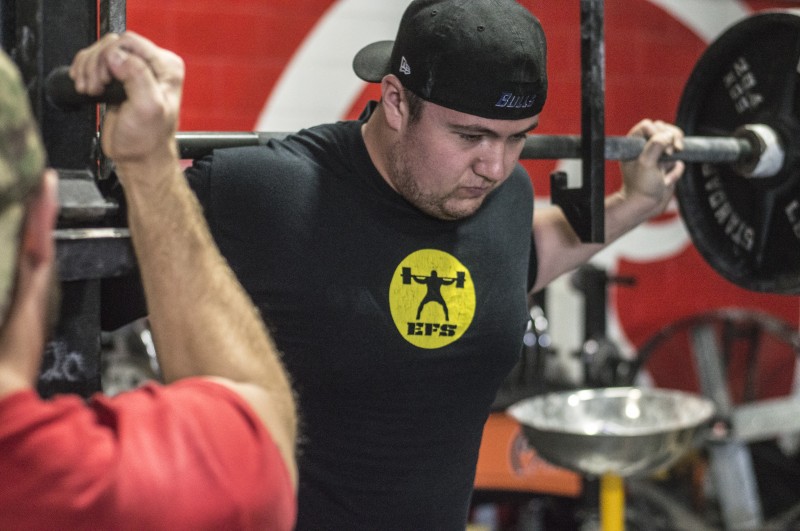

2 Comments